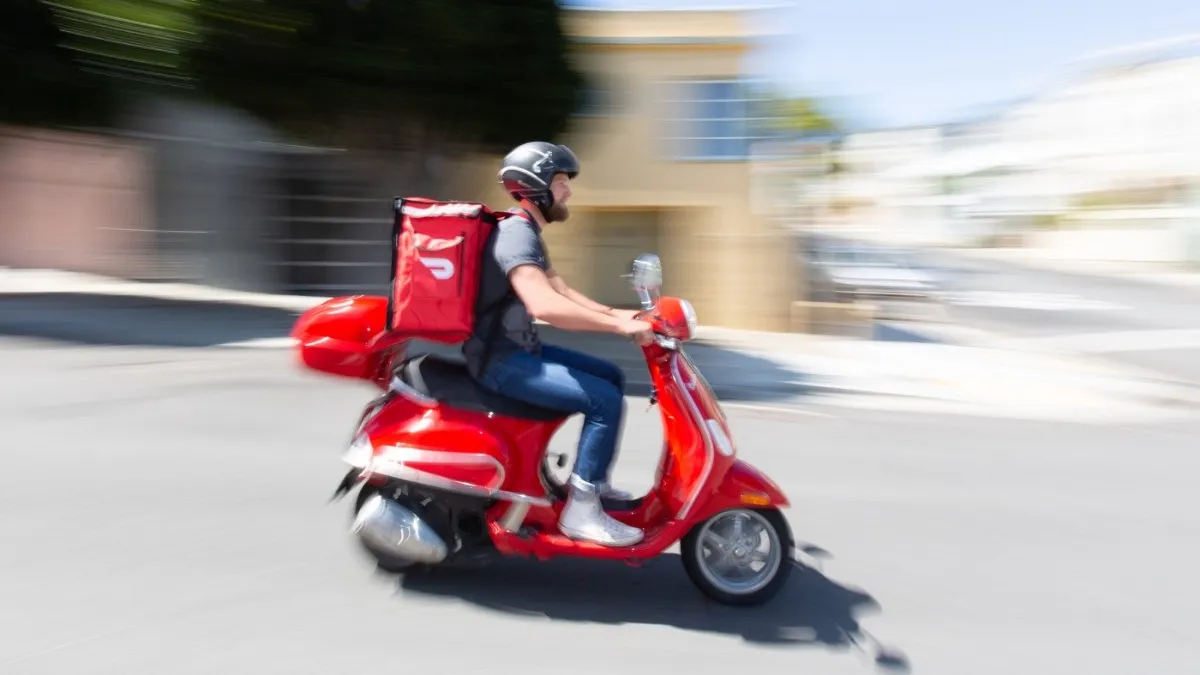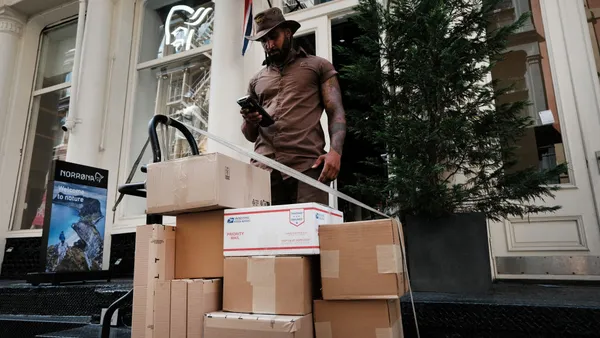Dive Brief:
- DoorDash focused on marketing after it struggled with a shortage of drivers. The delivery company has seen an increase in couriers since the last week of March, according to a shareholder letter detailing the company's Q1 earnings.
- Among DoorDash's biggest challenges last quarter included its undersupply of couriers, known as Dashers, in the last half of the period due to stronger-than-expected consumer demand, extreme weather events and the impact of stimulus checks, the letter stated.
- This undersupply, which resulted in a subpar experience for consumers and merchants, reduced the number of deliveries completed and increased costs, leading the company to improve its network efficiency, expand its marketing for Dashers and improve conversion rates.
Dive Insight:
While DoorDash's 2 million-plus Dashers earned more than $2.5 billion during the quarter, the company struggled to maintain its driver network, according to the shareholder letter. A driver shortage has resulted in longer wait times for deliveries and inconsistent service. Uber Eats has also been pushing to get more drivers and delivery workers, according to Restaurant Business.
While drivers benefit from flexible on-demand schedules — DoorDash drivers average about four hours per week — they have also been facing growing challenges. Drivers have been seeing an increase in violence during their routes, with car jackings on the rise, for example. The model is ideal for people seeking supplemental income, but it doesn't necessarily come with benefits and can be difficult for drivers relying on it as a main source of income, according to The New York Times.
DoorDash has benefited from the fact that it can source drivers beyond the typical ride-sharing worker pool, broadening its options. While ride-sharing requires having a car, Dashers don't need them and can complete deliveries on a bicycle, CEO Tony Xu said during an earnings call with investors.
Over 85% of DoorDash's couriers are students, have another part-time or full-time job or are self employed outside the gig economy, the shareholder letter said. According to a survey conducted by the Mellman Group in September, the company found that 21% of its Dashers drove for ridesharing companies and 6% said they preferred ridesharing to Dashing.
Predictions that the summer months produce lower order volume compared to winter months could help DoorDash catch up with demand. The company also expects some impact from more reopenings of businesses and the waning impact of stimulus checks, according to the shareholder letter.
During its first full quarter as a public company, DoorDash grew revenue by 198% to $1.1 billion, orders rose 219% to 329 million.














